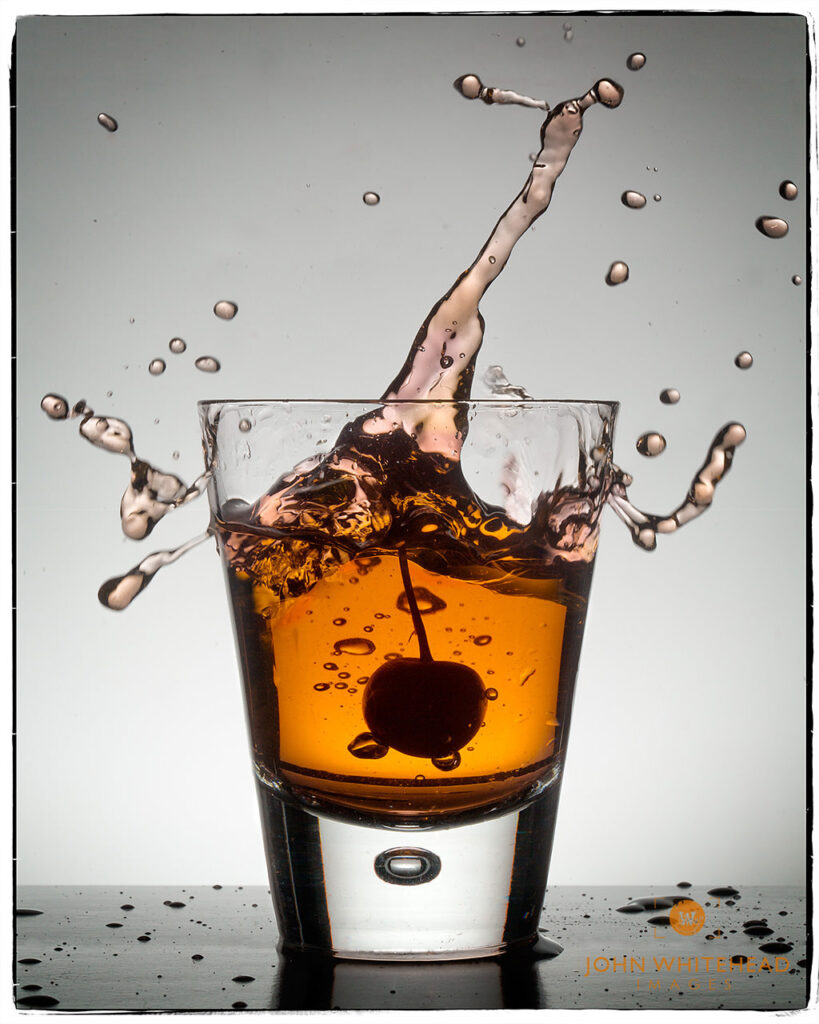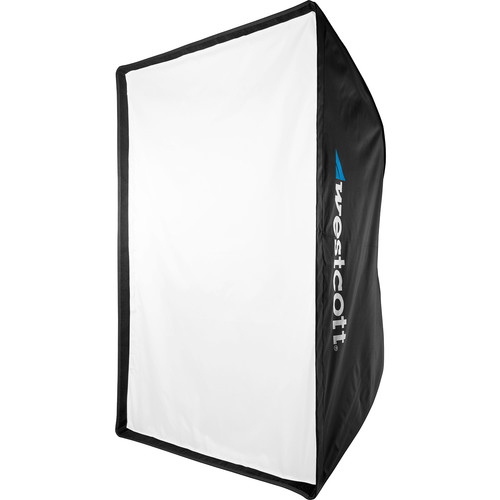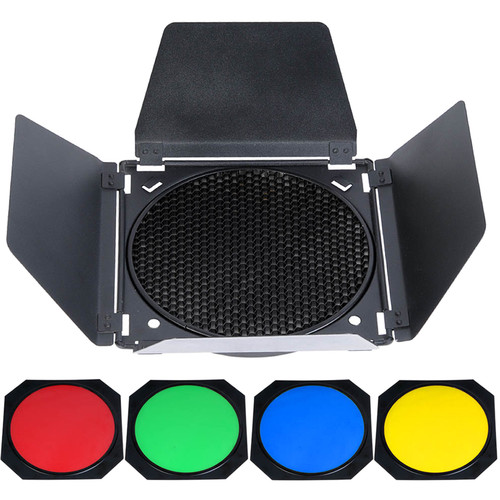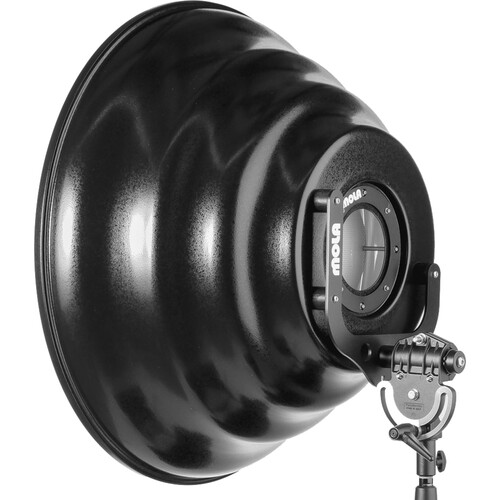The Ultimate Guide to Flash Photography and Strobes
The Ultimate Guide to Flash Photography and Strobes
Subscribe to YouTube

What is the Difference Between a On-Camera Flash and a Strobe?
The main difference between a camera flash and a photography strobe is the way in which they generate light and their power output.
A camera flash is a small, portable device that attaches to the camera and is used to provide additional light in low-light situations. It is typically powered by batteries and produces a quick burst of light when triggered by the camera’s shutter. Camera flashes are often used for on-camera flash photography, such as in events, weddings, or other situations where portability and convenience are important.
On the other hand, a photography strobe (also known as a studio flash) is a larger and more powerful lighting device that is typically used in a studio or controlled environment. It is designed to produce a burst of bright light when triggered, similar to a camera flash, but with much higher power output. Photography strobes are often used for off-camera flash photography, where the photographer has more control over the lighting and can create more complex lighting setups.
Another difference between camera flashes and photography strobes is their recycling time. Camera flashes typically have a shorter recycling time, allowing them to be used more frequently and rapidly, while photography strobes have a longer recycling time, requiring more time in between each flash.
In summary, while both camera flashes and photography strobes are used to provide additional lighting in photography, they differ in their power output, size, and intended use. Camera flashes are typically portable and used for on-camera flash photography, while photography strobes are larger and more powerful and are used for off-camera flash photography in a controlled environment.
What is a Meant by a Flash Guide Number?
A camera’s flash guide number is a measurement of the maximum distance a flash can effectively illuminate a subject, based on the aperture and ISO settings of the camera. It is a numerical value that represents the power of the flash unit and is calculated by multiplying the distance between the flash and the subject by the f-number of the camera’s aperture.
In other words, the flash guide number is determined by dividing the flash-to-subject distance by the aperture setting of the camera. For example, if the flash is 10 feet away from the subject and the camera aperture is set to f/8, the flash guide number would be 80 (10 feet x f/8 = 80).
A higher guide number indicates a more powerful flash and therefore the ability to effectively illuminate subjects at greater distances. However, other factors such as the quality of the flash unit, ambient light conditions, and the reflectivity of the subject’s surroundings can also impact the effectiveness of a flash.
Monolight verses Power Pack and Head
In photography, a monolight and a power pack and head are two different types of studio lighting equipment used to provide artificial lighting for photography.
A monolight, also known as an all-in-one strobe or self-contained flash, is a single unit that includes both the power source and the light head in one compact package. Monolights typically have a built-in power source such as a battery or a plug that can be connected to an electrical outlet. They also have controls for adjusting the power output, modeling light, and other settings, all in one unit. Monolights are often portable and easy to set up, making them a popular choice for location photography.
On the other hand, a power pack and head system consists of two separate units: a power pack and a light head. The power pack is a separate unit that provides the power to the light head, and can be connected to one or more light heads depending on the photographer’s needs. The light head is the part of the system that produces the light, and is attached to the power pack via a cable. The power pack typically includes controls for adjusting the power output and other settings, while the light head itself is usually more compact and focused purely on producing light. Power pack and head systems are often more powerful than monolights, and can be used for larger or more complex lighting setups in a studio environment.
Overall, the main difference between monolights and power pack and head systems is the level of integration and flexibility they offer. Monolights are all-in-one units that are easy to use and set up, but may have limitations in terms of power output and flexibility. Power pack and head systems offer greater flexibility and power, but require more setup and can be more complex to use. The choice between the two will depend on the photographer’s needs and preferences.
What is the Benefit of a Battery Powered Monolight?
A battery-powered monolight offers several benefits for photographers:
- Portability: Since a battery-powered monolight doesn’t need to be plugged into an electrical outlet, it is more portable than a traditional monolight. This makes it an ideal choice for location photography, where access to power may be limited.
- Flexibility: Battery-powered monolights can be used in a wider range of shooting situations than traditional monolights. For example, they can be used in outdoor settings where there is no access to power, or in situations where power cables would be impractical or hazardous.
- Quick setup: Battery-powered monolights are often quick and easy to set up, since they don’t require a power cable or power outlet. This makes them ideal for fast-paced photo shoots or situations where time is limited.
- Consistency: Battery-powered monolights provide consistent lighting output, even when shooting in areas where the power supply may fluctuate. This is important because it helps to ensure that the lighting remains consistent throughout the shoot, reducing the need for post-production corrections.
Overall, battery-powered monolights offer a lot of benefits for photographers who need to work in a variety of shooting situations. They are versatile, portable, and offer consistent lighting output, making them an excellent choice for location photography, event photography, and other types of photography where access to power may be limited.
What is a Camera’s Maximum Sync Speed?
A camera’s maximum sync speed, also known as flash sync speed, refers to the fastest shutter speed at which the camera can synchronize with a flash unit.
When a camera takes a picture with a flash, the shutter must open long enough for the flash to emit enough light to properly illuminate the subject. However, if the shutter speed is too fast, the shutter will close before the flash has completed its full burst, resulting in an incomplete or unevenly illuminated image.
The maximum sync speed varies between camera models and is typically listed in the camera’s specifications. Most entry-level DSLRs have a sync speed of around 1/200th of a second.
It’s worth noting that some cameras have a “high-speed sync” feature that allows for syncing with a flash at faster shutter speeds, but this often requires sacrificing some flash power and can lead to a loss of effective range.
What is High Speed Sync in Photography?
High-Speed Sync (HSS) is a photography technique that allows photographers to use a flash at higher shutter speeds than the maximum sync speed of their camera. The maximum sync speed of a camera refers to the fastest shutter speed at which the camera can synchronize the flash with the exposure, typically around 1/200th or 1/250th of a second for most DSLRs.
In situations where you need to use a fast shutter speed, such as when shooting outdoor portraits in bright sunlight, the maximum sync speed may not be fast enough to properly expose the image with flash. This is where HSS comes in. HSS allows you to use a flash at higher shutter speeds, up to the maximum shutter speed of your camera.
With HSS, the flash emits a series of rapid pulses of light, effectively creating a continuous burst of light that matches the duration of the exposure. This enables you to use the flash to fill in the shadows in your subject, even when shooting at high shutter speeds.
HSS can be very useful in outdoor portrait and sports photography, where you need to freeze action and balance ambient light with the light from your flash. However, it is important to note that using HSS can reduce the power of your flash, so you may need to use multiple flashes or a more powerful flash to achieve the desired exposure.
What is a Strobe Maximum Flash Duration?

Strobe lights are designed to produce short, intense bursts of light. The maximum flash duration of a strobe light depends on the design of the light and the settings used.
In general, the maximum flash duration of a strobe light is typically very short, usually in the range of microseconds (millionths of a second) or even nanoseconds (billionths of a second). This extremely short duration allows the strobe light to freeze the motion of fast-moving objects or create a “stop motion” effect.
The exact maximum flash duration of a particular strobe light will depend on factors such as the power of the flash, the voltage of the power source, and the design of the flash tube. It is typically specified by the manufacturer and can vary widely depending on the specific model of strobe light.
How is the Power of a Strobe Measured?
The power of a strobe light is typically measured in watts, which is a measure of the rate at which energy is consumed or produced. Specifically, the power of a strobe light refers to the rate at which electrical energy is consumed by the light to produce flashes of light.
The power of a strobe light can be measured using a power meter, which is a device that measures the electrical power consumption of the light. The power meter is connected to the power source of the strobe light, and the strobe light is then turned on and set to its highest power setting. The power meter will then measure the amount of power consumed by the light and provide a reading in watts.
It is important to note that the power consumption of a strobe light can vary depending on factors such as the flash rate, the duration of the flashes, and the intensity of the light. Additionally, the actual amount of light produced by a strobe light is not always directly proportional to its power consumption, as the efficiency of the light can also affect its brightness. Most strobes you will use are measured in watt/seconds and corresponds to the number on the strobe.
What is a Flashes or Strobes Recycle Time?
The recycle time of a flash or strobe refers to the amount of time it takes for the device to recharge its capacitor and be ready to fire again after it has been triggered. When a flash or strobe is fired, it discharges its stored energy to produce a burst of light. The device then needs to recharge its capacitor before it can produce another burst of light.
The recycle time is an important consideration when using flashes or strobes for photography, as it affects how quickly the photographer can take subsequent shots. A shorter recycle time means that the flash or strobe can be fired more frequently, allowing for faster shooting and more opportunities to capture the desired image.
The recycle time of a flash or strobe can vary depending on the device and its power output. Smaller, less powerful flashes or strobes typically have a shorter recycle time than larger, more powerful ones. Additionally, the recycle time can be affected by the power level at which the device is being used. Higher power settings may require longer recycle times.
Some advanced flash or strobe systems include features such as battery packs or external power supplies, which can reduce the recycle time and allow for more rapid firing of the device. Additionally, some cameras and flash triggers have features such as high-speed sync or multi-flash mode, which can help to mitigate the effects of longer recycle times by allowing the flash to fire more quickly or fire multiple times in rapid succession.
What is Meant by On-Camera Flash?
On-camera flash refers to the use of a camera-mounted flash unit that is directly attached to the camera body, typically via a hot shoe or sync cord. This type of flash is also sometimes referred to as a “hot shoe flash” or a “speedlight”.
When using an on-camera flash, the flash unit is positioned above the lens of the camera and is synchronized with the camera’s shutter to produce a burst of light when the picture is taken. This type of flash is often used in situations where additional lighting is needed to properly expose a scene, such as in low-light conditions or for fill lighting in daylight.
On-camera flashes typically have adjustable power levels, and may also offer features such as bounce and swivel capabilities, which allow the flash to be directed at different angles to achieve more natural-looking lighting. Some on-camera flashes also have additional features such as wireless triggering or the ability to be used off-camera with a remote trigger.
While on-camera flash can be a useful tool for many photographers, it can also produce harsh, unflattering lighting if not used properly. To achieve more natural-looking results, photographers may choose to use diffusers, bounce cards, or other accessories to soften and redirect the light from the flash.
What is TTL?
TTL stands for “through the lens”, and refers to a flash metering system that allows a camera to communicate with a compatible flash unit to automatically determine the correct amount of light needed for a given exposure.
In TTL flash metering, the camera measures the amount of light passing through the lens during a pre-flash, and then communicates this information to the flash unit. The flash unit then adjusts its output to provide the correct amount of light needed to properly expose the scene.
TTL flash metering can be a useful tool for photographers because it allows for more accurate and consistent flash exposures, especially in situations where lighting conditions may change rapidly or where manual flash settings may be difficult to adjust quickly.
Many modern camera systems and flash units support TTL flash metering, and it is often used in combination with other flash modes, such as high-speed sync (HSS) and rear-curtain sync, to achieve specific lighting effects. However, it is important to note that TTL flash metering may not always provide perfect results, and some photographers may prefer to use manual flash settings to have more control over the final output.
What is Balanced Fill Flash?
Balanced fill flash is a technique used in photography to achieve a balanced exposure between the foreground subject and the background. It involves using a flash to provide additional light to the foreground subject, which helps to balance the exposure with the brighter background.
The term “balanced” refers to the fact that the flash output is adjusted to match the ambient light in the scene, creating a more natural and even exposure. The result is a photograph where the foreground subject is properly exposed, without being overexposed or underexposed, and the background is still visible and properly exposed.
Balanced fill flash is commonly used in outdoor photography, particularly in situations where the background is much brighter than the foreground, such as when photographing people against a bright sky or in shadow. It can also be used in indoor photography, particularly in situations where the lighting is uneven or dim.
What are Flash and Strobe Modifiers?
lash or strobe modifiers are accessories that can be attached to a flash or strobe to modify the quality, direction, and intensity of the light it produces. They can be used to create a wide range of lighting effects, from soft and diffused to harsh and directional, depending on the specific modifier used.
There are many different types of flash or strobe modifiers available, each with their own unique characteristics and uses. Here are some of the most common types of flash or strobe modifiers:
- Softboxes: Softboxes are large, rectangular or octagonal devices that attach to a flash or strobe to create soft, diffused light. They typically have a reflective interior and a diffusion panel that spreads the light out evenly.
- Umbrellas: Umbrellas are a popular modifier that can be used to create soft, directional light. They consist of a reflective surface attached to a frame that opens like an umbrella. They can be used in shoot-through mode, where the light passes through the umbrella and is diffused, or in bounce mode, where the light is reflected back toward the subject.
- Reflectors: Reflectors are a simple and versatile modifier that can be used to bounce light back onto the subject. They come in a variety of shapes and sizes, and can be used to fill in shadows or create a more directional light.
- Snoots: Snoots are a narrow tube-like modifier that can be used to create a highly directional beam of light. They are often used for highlighting specific areas of the subject or for creating a dramatic, spotlight-like effect.
- Gels: Gels are colored filters that can be attached to a flash or strobe to change the color temperature or color of the light. They can be used to create a wide range of effects, from correcting for different types of lighting to creating more creative and stylized images.
Overall, flash or strobe modifiers are an essential tool for photographers who want to have more control over the quality, direction, and intensity of the light they use in their photography. By choosing the right modifier for the situation, photographers can create a wide range of unique and visually striking image
What is the Purpose of Rear Curtain Sync?
Rear curtain sync, also known as second curtain sync, is a flash photography technique that allows you to capture motion trails while also illuminating the subject with the flash. It works by firing the flash at the end of the exposure rather than at the beginning.
In normal flash photography, the flash fires at the beginning of the exposure, which freezes the subject in motion but may leave a blurry trail behind them. With rear curtain sync, the flash fires just before the end of the exposure, capturing the subject’s motion up to that point and freezing them with the flash at the end of the exposure.
This technique can be particularly useful in low-light situations where you want to capture the ambient light and also freeze the motion of the subject. For example, when photographing a moving subject in a dimly lit room, rear curtain sync can be used to capture the trail of the subject’s motion and also illuminate them with the flash at the end of the exposure.
Overall, the purpose of rear curtain sync is to create more dynamic and interesting photographs that capture both the motion of the subject and the ambient light in the scene.
To Learn More about Photography check out https://johnwhiteheadimages.com/category/digital-photography/










